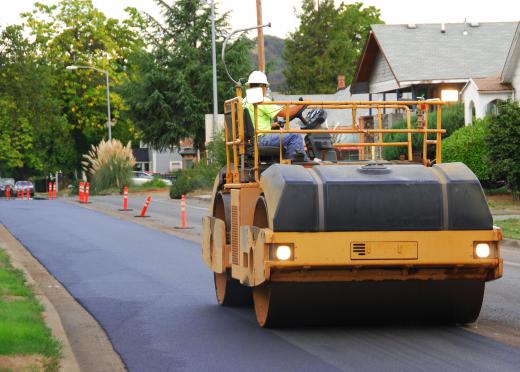A construction barrel is a traffic control device that can be used in construction zones or areas where road work is taking place. The main purpose of a construction barrel is to channel traffic away from its normal path to accommodate construction projects, equipment and workers. Traffic cones, cement barricades and a variety of other devices can also serve the same general purpose in different circumstances. Construction barrels usually are made out of plastic and can be filled with either water or sand to make them more sturdy. Many jurisdictions have crash test requirements that construction barrels must pass so that they will help reduce the chance of fatal accidents.
When a construction project intrudes onto a roadway, there typically is some type of effort to redirect traffic away from the workers, equipment and the project itself. This also is the case with road construction projects in which the roadway itself is being worked on. In some cases, an entire road can be blocked off with barricades, although if there is enough space, some type of traffic channelizing is often attempted. This might involve closing a single lane and allowing alternating streams of traffic through the remaining lane or guiding multiple lanes so that they can stay in use while avoiding a construction project. Construction barrels can be used in each of these circumstances.

A construction barrel is a large plastic drum that typically is orange in color. Local jurisdictions often regulate the exact color scheme of these traffic control devices, but they often are orange with horizontal white stripes. The stripes on a construction barrel are often reflective as well, to increase their visibility. In some cases, an additional reflector or light is mounted on the top of the barrel to further increase its visibility under all conditions.

Construction barrels tend to be hollow and made of plastic, so they are often filled with water or sand to help keep them in place, especially if they happen to be grazed by passing vehicles. Safety regulations are often imposed on the design of construction barrels, and they typically will not stand up to a head-on impact from a vehicle. Before the introduction of the plastic construction barrel, these traffic control devices typically were made of metal and filled with water or sand. The older barrels, because they were metal, typically posed a greater risk to motorists in the case of an accident.
